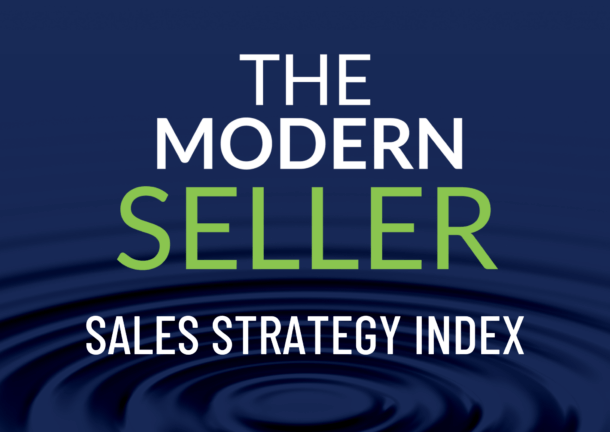In any of these scenarios, there are new stakeholders in the mix. How do CEOs, sales leaders, and sales professionals determine where to focus time, energy, and finances related to sales results?
There are your short-term metrics and your long-term metrics, and much of this depends on the timelines and milestones set as part of the ownership change or investment being made in your organization. In The Modern Seller, I cite a concept called strategic speed, based on research conducted by Forum Corporation (now part of Korn Ferry). Strategic speed is the ability to balance both short-term and long-term initiatives. Leaders can maintain momentum for the long term (and not lose focus), while also keeping short-term performance goals intact (often required with any merger, acquisition, or investment).
Sales Growth Metrics to Consider
1. Client retention.
The first metric is maintaining your A-level and B-level clients through any type of event. I teach a concept called the value spectrum whereby sellers can assess the different types of value a customer might be seeking and how to deliver that value. Reputational value is near the top of the value spectrum. Every time a client decides to do business with us, they use their social and reputational capital to do so. When there’s any type of event changing company structure or strategy, our best clients will have concern. They might not voice that concern, but it’s there. Our role is ensuring relationship continuity and reputation. This becomes a foundation while also allowing the company to pursue new clients.
2. Deal revenue and profit for the next two quarters.
One client of mine used a method to categorize critical priorities during a merger: now, next, future. Using that framework:
- What do the next two quarters bring in terms of deal revenue and profit (now)?
- What does the upcoming 12-24 months bring (next)?
- What is our future strategy in the new environment (future)?
- Where are our greatest opportunities and risks?
For the purposes of critical metrics, focus on the now to ensure immediate opportunities remain intact, and at the necessary revenue and profit levels. You can then turn your focus to the next 12 months, and repeat the exercise for future strategy.
3. Individual Sales Plans.
There are a few habits that separate elite sellers from the rest of the pack. One of those habits is the creation and implementation of an individual sales plan. In any type of investment event, the due diligence process will likely uncover existing sales strategy and sales plans. Sales strategy is the overarching path; individual sales plans are at the seller level, documenting territory tactics, implementation, and metrics. Many sales teams simply don’t have individual sales plans that are required, coached, and tracked by leaders and sellers.
4. Leading Indicator Activity.
These are the high-value sales activities your teams are engaged in that will create sales results. I consider an individual sales plan to be a leading indicator activity. A lagging indicator activity is one that tells you if you’ve reached the desired result (or not). Quota attainment is a lagging indicator activity. The goal is to select the right leading indicator activities and see those through to create the intended result. With M&A or outside investment scenarios, key themes I advise my clients on center around pipeline strength, qualified opportunities, and forecasted wins. Leading indicator activities in these areas might include prospecting metrics such as the number of first meetings set and the number of follow-up meetings set, and the number and value of qualified leads in the pipeline.
5. Maintaining Engagement of High Performers.
When there’s the potential for significant uncertainty in the organization, your high performers are the greatest flight risk; maintaining their engagement becomes critical. These are the individuals whose absence would be a tangible loss for the organization. These are often the individuals who bring others along and become informal leaders in the process.
While there’s a cloak of confidentiality around events leading up to a merger, acquisition, or outside investment, an early-stage plan for keeping high performers is a strategy worth having in place. Ideas include financial or ownership elements, an elevated role, a voice in planning new sales structures, a task force or mentoring role, or a bridge plan to ensure they will maintain levels of compensation during the transition.
There’s no crystal ball on the acceleration or deceleration of mergers, acquisitions, or investment events in the economy. I can say with certainty that growth-oriented organizations will continue to consider these options as part of their strategy. Using the above sales growth metrics in the due diligence process and after will ensure that the sales team, clients, and opportunities most critical to success will be in a position to thrive.
Schedule a Meeting to Discuss Your Sales Strategy
Don’t let your competition get an advantage. We can help. If you want to know how to improve your sales growth strategy, or you’d like an outside perspective, let’s talk. Contact us to schedule a conversation with Amy.



 Our Strategic Selling signature sales training program is now available online. This online sales learning program is ideal for professional services and B2B sales. Get started with 2 free lessons.
Our Strategic Selling signature sales training program is now available online. This online sales learning program is ideal for professional services and B2B sales. Get started with 2 free lessons.